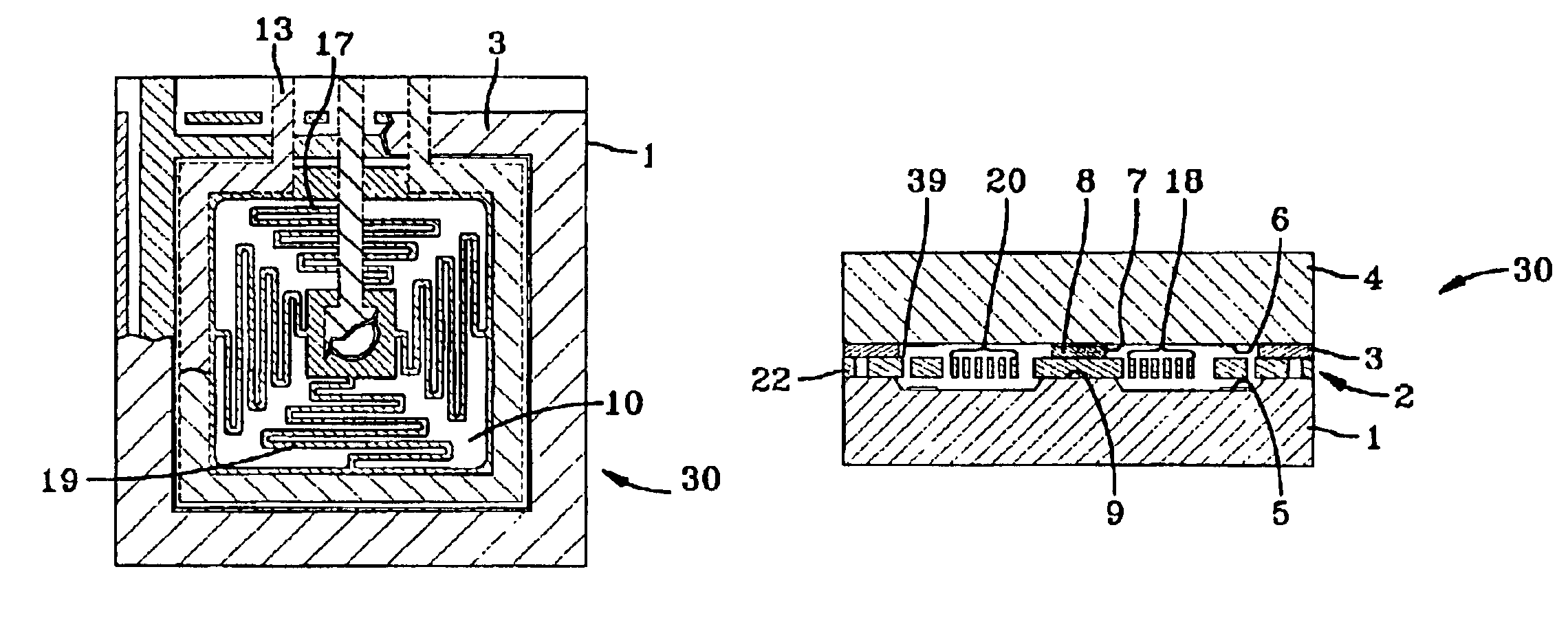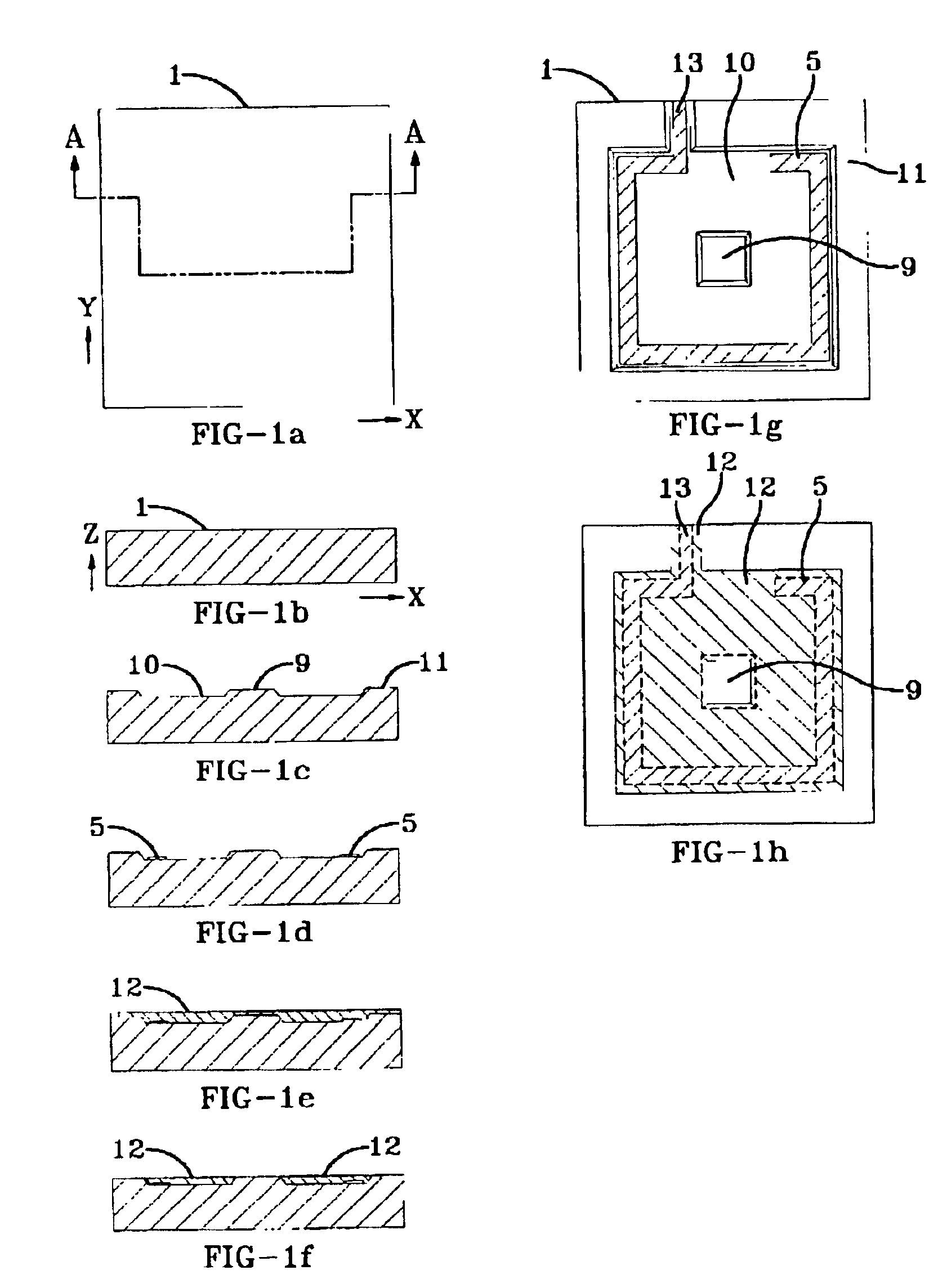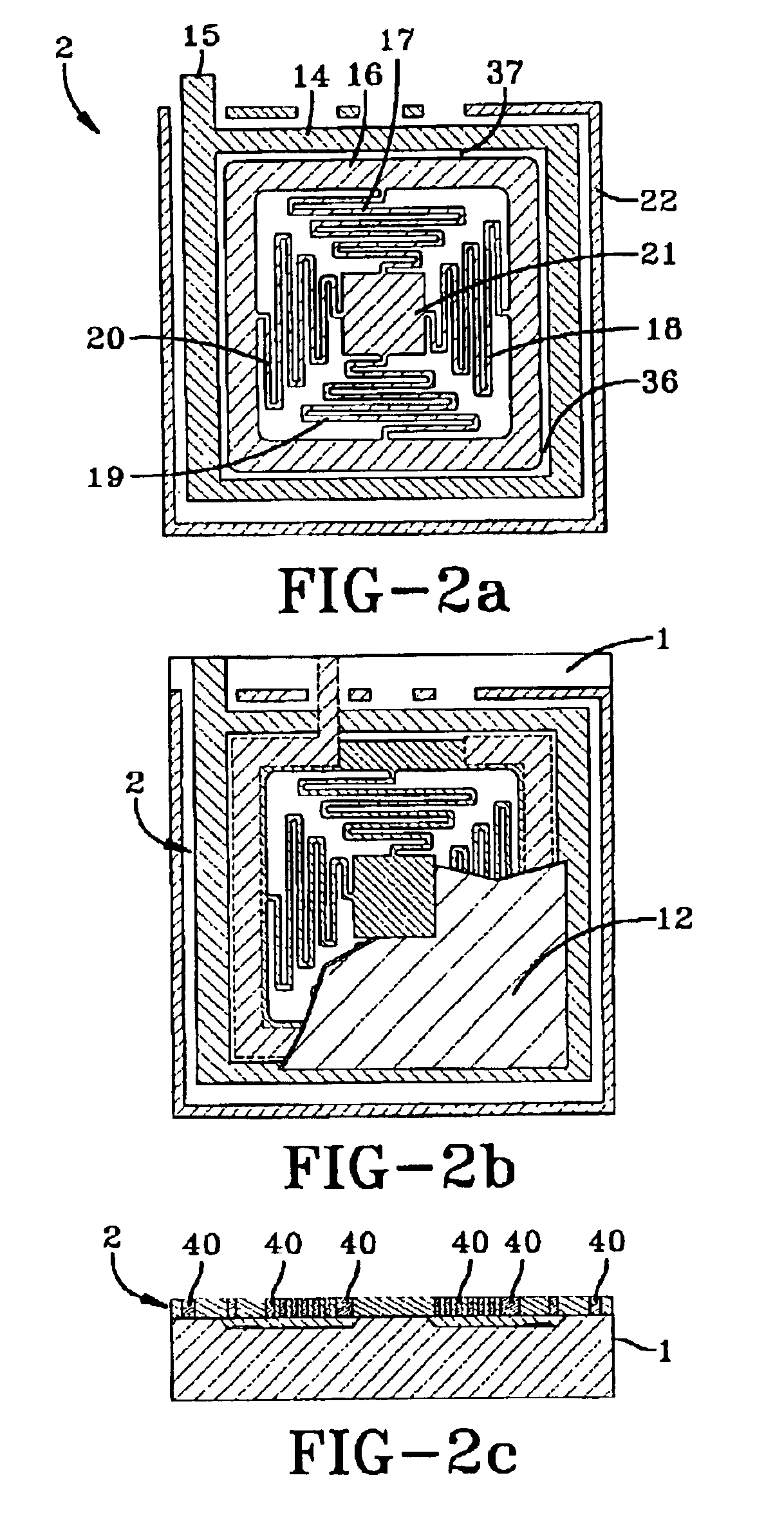Omnidirectional microscale impact switch
a micro-scale impact switch and micro-scale technology, applied in the direction of speed/acceleration/shock measurement, contacts, instruments, etc., can solve the problems of large volume demands, too large switch configuration, too large, etc., and achieve the effect of reducing the number of insertions
- Summary
- Abstract
- Description
- Claims
- Application Information
AI Technical Summary
Benefits of technology
Problems solved by technology
Method used
Image
Examples
Embodiment Construction
Other embodiments of the present invention can be envisioned that use a different pattern for the suspension springs, or a different shape of the proof mass, for example a varying thickness in the square proof mass, or perhaps a circular proof mass with a circular contact electrode, etc., but these are the same invention. A setback-hardened design would reduce or eliminate gap 38 and bottom contact electrode 5. With developments in the industry it will be possible to form most or all of the features of device layers 2 and 200 in the aforementioned embodiments by advanced molding or hot-embossing mold transfer processes instead of a direct micromachining technique. For example, the micromachining operation can be used to create a master mold that is then used to "print" molds for the electroplating of the product devices.
While the invention has been described with reference to certain preferred embodiments, numerous changes, alterations and modifications to the described embodiments ...
PUM
 Login to View More
Login to View More Abstract
Description
Claims
Application Information
 Login to View More
Login to View More - R&D
- Intellectual Property
- Life Sciences
- Materials
- Tech Scout
- Unparalleled Data Quality
- Higher Quality Content
- 60% Fewer Hallucinations
Browse by: Latest US Patents, China's latest patents, Technical Efficacy Thesaurus, Application Domain, Technology Topic, Popular Technical Reports.
© 2025 PatSnap. All rights reserved.Legal|Privacy policy|Modern Slavery Act Transparency Statement|Sitemap|About US| Contact US: help@patsnap.com



